- Introduction: Sea Breezes, Temple Bells, and Timeless Calm
- The Spiritual Significance of Island Temples
- How to Use This Guide (and Plan Your Route)
- Phuket’s Sacred Landmarks
- Koh Samui’s Iconic Temples
- Koh Phangan’s Spiritual Side
- Koh Chang’s Hidden Treasures
- Packing & Dress Code for the Best Island Temples in Thailand
- Beyond Sightseeing: Spiritual Experiences to Try
- Phuket in Detail: Routes, Timings, and Tips
- Koh Samui in Detail: A Short, Beautiful Loop
- Koh Phangan in Detail: Quiet Paths, Clear Minds
- Koh Chang in Detail: Slow Travel, Strong Connections
- Your 3-Day Path to the Best Island Temples in Thailand
- Practicalities: Transport, Time, and Weather
- Responsible Visits: Giving Back and Staying Kind
- Common Questions (Quick Answers)
- Conclusion: A Gentle Way to Travel
- 🙋 FAQs
Introduction: Sea Breezes, Temple Bells, and Timeless Calm
If you love places where nature and culture meet, you’ll feel it the moment you step into the best island temples in Thailand—golden spires glinting above turquoise seas, incense curling through coconut palms, and a hush that invites you to slow down. Thailand’s islands hold sacred sites shaped by centuries of Buddhist devotion and maritime life. From Phuket’s hillside sanctuaries to Koh Samui’s lake-ringed shrines and Koh Phangan’s forest pagodas, each temple is a living community hub: a place to learn, give thanks, and enjoy panoramic views that make travel memories stick. In this guide you’ll find not only inspiration but also practical tips: the Thailand temple dress code, respectful behavior inside the ubosot, and the best times to visit. Whether you’re plotting a sunrise blessing or looking for a quiet corner to meditate, these spiritual sites on Thai islands offer a gentle path into local life.
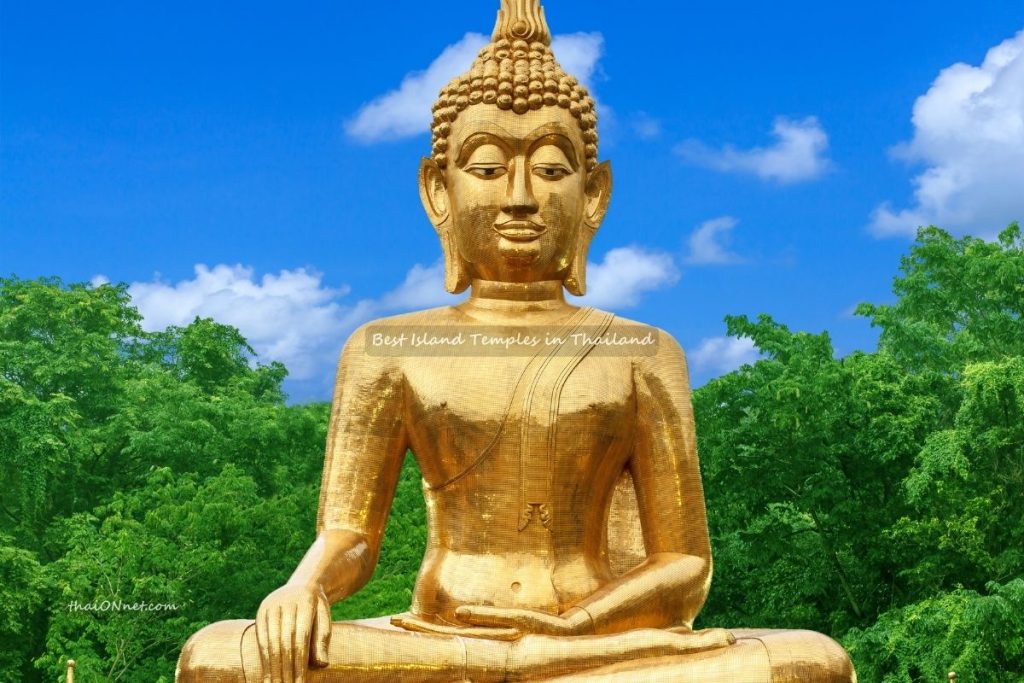
Planning a family adventure beyond temples? Don’t miss our guide on island hopping in Thailand with children for kid-friendly routes and tips.
The Spiritual Significance of Island Temples
Island temples tell stories about water, wind, and wanderers. Historically, seafaring communities built shrines on hilltops or near beaches to bless fishermen, welcome travelers, and mark safe harbors. You’ll often see lookout-points beside the viharn, where monks and villagers once scanned the sea for weather or returning boats. Today, these sanctuaries still center daily routines: dawn chanting, alms rounds, weekend fairs, and festivals that mix the sacred and the social. Many island wats host open spaces for reflection, making them ideal spiritual sites on Thai islands if you’re seeking a simple meditation practice. The settings are striking—Buddhist temples near beaches in Thailand feel both ancient and alive, with gulls overhead and the steady rhythm of waves below. When you visit, you’re not entering a museum; you’re stepping into a living tradition that asks only for presence and kindness.
How to Use This Guide (and Plan Your Route)
Start by choosing one island as your base—Phuket if you want a mix of city and coast, Koh Samui for resort-friendly comforts, or Koh Phangan for quieter vibes—and then add day trips. Aim for mornings or late afternoons: temples are cooler, light is softer, and ceremonies are more likely. Build in time for simple rituals like offering flowers or lighting a candle, and learn a few Thai phrases to thank the community. This guide highlights the landmarks, shares etiquette, and suggests practical routes so your days flow without rush. Think of it as a calm companion for navigating island culture, ensuring your time at the best viewpoints and shrines feels unhurried and meaningful.
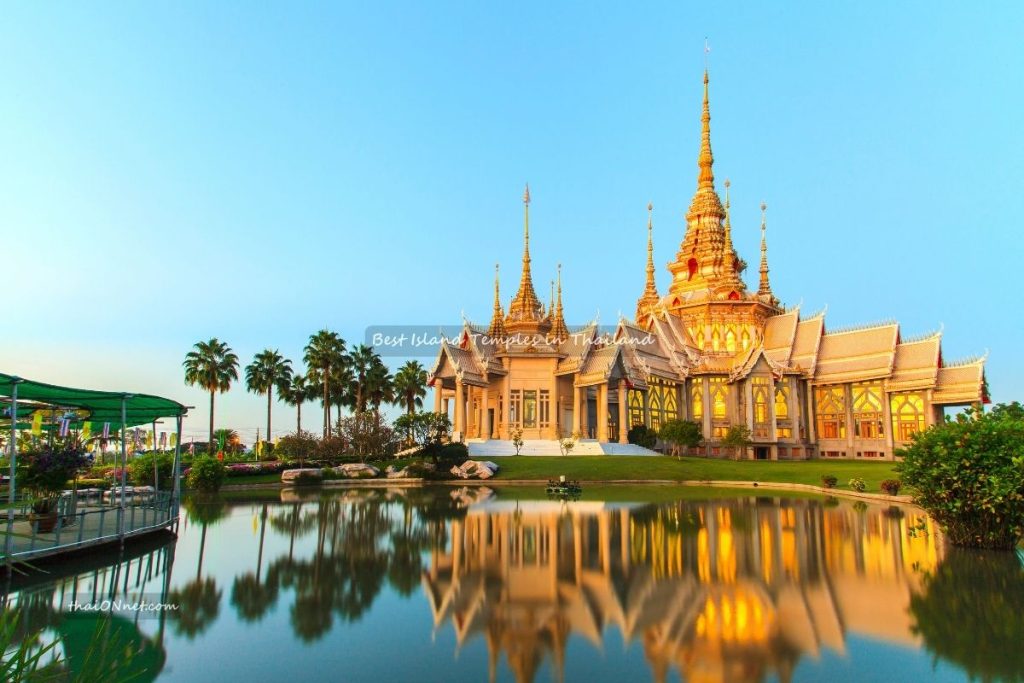
Curious about temples that rise above water? Dive deeper in our post on exploring Thailand’s unique floating temples for stories and travel advice.
Phuket’s Sacred Landmarks
Phuket offers dramatic viewpoints and easy access, making it a strong hub for first-timers. Roads are well-marked, taxis and ride-hailing are plentiful, and scooter rental is straightforward for confident riders. Between beach time and night markets, temple visits add a reflective rhythm to your itinerary.
Big Buddha Phuket (Wat Phra Yai, Nakkerd Hill)
The island’s most iconic statue presides from Nakkerd Hill, visible from long stretches of coastline. A broad staircase leads to a marble-clad image of the Buddha with sweeping views toward Chalong Bay and Kata. Come early to catch pastel skies and quiet grounds. Modesty matters—cover shoulders and knees—and a wrap or sarong is often available at the entrance. This hilltop sanctuary belongs on any list that travelers compile when seeking the best island temples in Thailand. You’ll find spaces to sit, listen to the breeze, and watch the city wake.
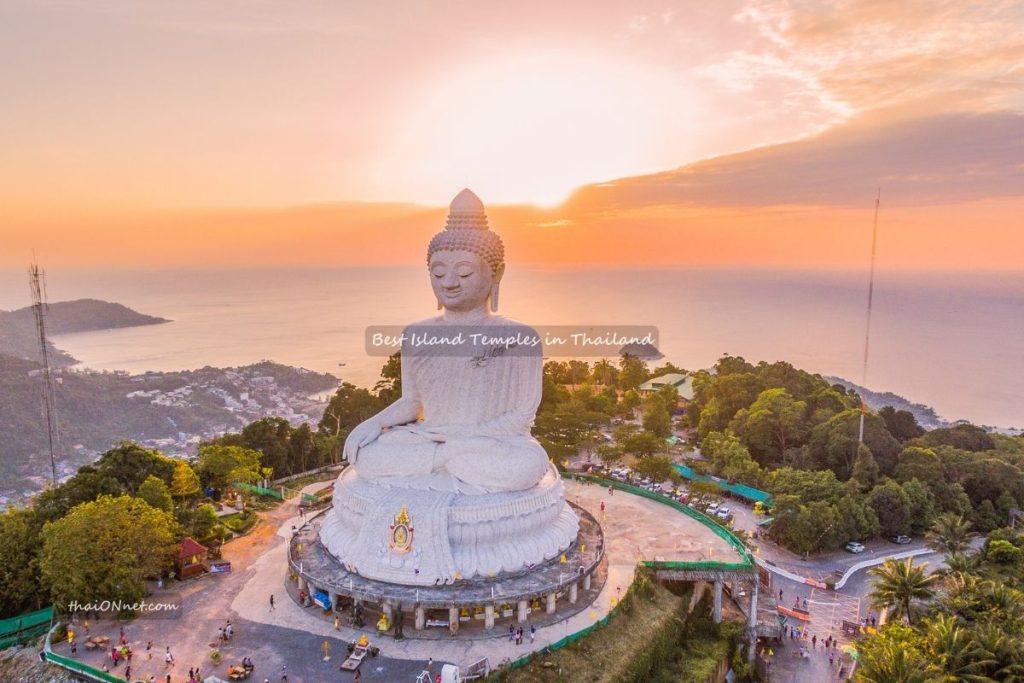
Practical notes:
- Getting there: Taxi or scooter; the road is paved but steep in sections.
- Etiquette: Remove hats, speak softly, avoid climbing on statues.
- Photography: Fine outdoors; inside halls, look for “no photo” signs and follow them.
Wat Chalong (Wat Chaiyathararam)
Wat Chalong is Phuket’s most visited temple complex—a vibrant place of devotion that’s also deeply rooted in community life. The Phra Maha Chedi towers over the grounds, and the main hall honors revered monks Luang Pho Chaem and Luang Pho Chuang. On weekends and holidays, you may hear ceremonial firecrackers at the furnace nearby—offerings of thanks for prayers answered. For many visitors, Wat Chalong is a gateway to learning basic customs: wai gently, keep voices low, and walk clockwise around shrines.
Highlights:
- Relic chedi: Climb the levels for glittering mosaics and breezy balconies.
- Local culture: Market stalls sometimes appear near festivals—try coconut pancakes and grilled bananas.
- Dress code: Same guidance applies; bring a light scarf to be safe.
Hidden Phuket Gems
Beyond the famous duo, look for smaller hillside wats with coastal views. These quieter spaces often host community chanting or English-language meditation sessions. Ask politely at the office or from a volunteer; many temples welcome newcomers who are respectful and curious.
Koh Samui’s Iconic Temples
Koh Samui blends ocean panoramas with ornate temple art—multi-armed Bodhisattva statues, gleaming naga stairways, and calm waters that mirror color and light. Distances are manageable by songthaew, taxi, or scooter, and major sites sit within an easy loop.
Wat Phra Yai (Big Buddha Koh Samui)
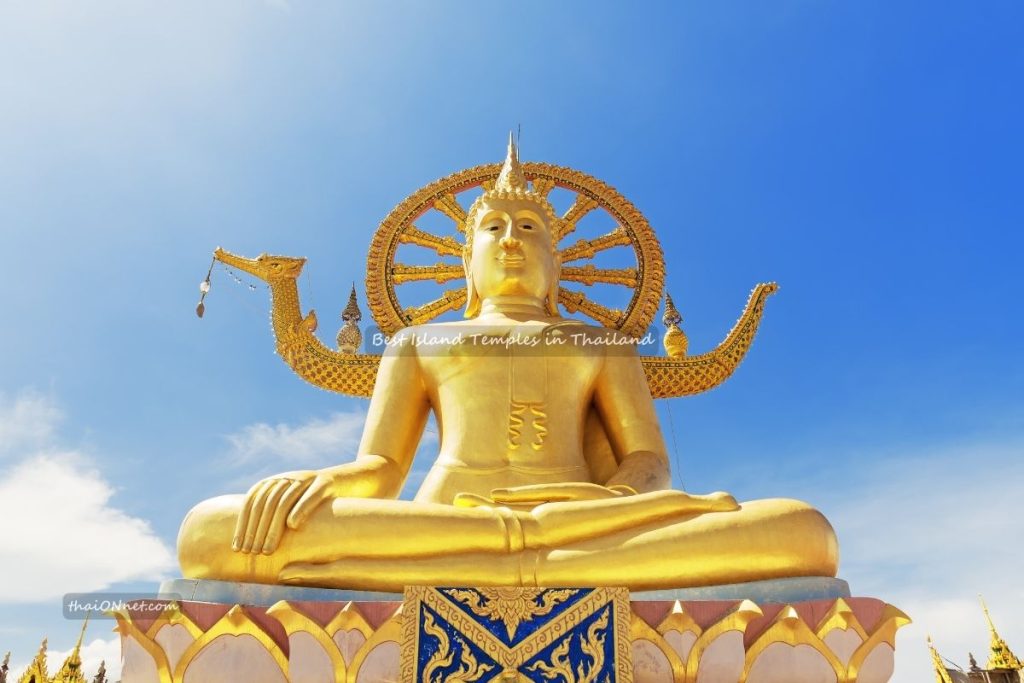
Set on a small islet linked by causeway, Wat Phra Yai’s 12-meter golden Buddha is a symbol of the island. Come at sunrise to see fishermen setting out and travelers quietly circling the base of the statue. Vendors sell lotus flowers and incense; you can make a simple offering and sit for a few minutes of mindful breathing. Families often appreciate the gentle, open spaces and the friendly cats who lounge near shaded benches.
Wat Plai Laem (Guanyin & the Lake)
Just a few minutes away, Wat Plai Laem dazzles with a lake-ringed complex and striking statues, including the compassionate Guanyin. Bridges arc across the water to island shrines; offerings of fish food support the resident catfish—popular with kids. Artistic details here tell cross-cultural stories and make the temple a favorite for photographers. Between these two landmarks you’ll understand why savvy travelers talk about Koh Samui and Koh Phangan temples as a single spiritual circuit—a pair of islands, distinct yet complementary.
Tips for Samui:
- Heat management: Bring water; shaded corridors help, but midday sun is strong.
- Footwear: Easy on/off shoes help because you’ll remove them frequently.
- Respect: Avoid drone flights without permission; protect quiet zones.
Koh Phangan’s Spiritual Side
Known for natural beauty and a slower pace, Koh Phangan’s temples sit amid hills and forests. Even short walks from the road can feel otherworldly—cicadas buzzing, palms swaying, and the scent of resin after rain.
Wat Phu Khao Noi (The Oldest Temple)
Often called the island’s oldest wat, Wat Phu Khao Noi feels intimate. Terraced grounds climb to simple, graceful halls where resident monks may be tending the gardens. If you’re building a reflective itinerary, this sanctuary belongs beside Samui’s big landmarks—no crowds, no rush, just space to breathe and listen. Visitors seeking Koh Samui and Koh Phangan temples with a quieter atmosphere usually start here, then branch out to hillside shrines for sunset views.
Mindful moments:
- Meditation: Ask about open sittings or morning chanting; many wats welcome newcomers.
- Offerings: Flowers and candles are easy; cash donations support upkeep and community projects.
- Photography: Always pause before lifting the camera—people praying should not be interrupted.
Scenic Temple Lookouts
A few smaller temples perch on ridges with sea glimpses through the trees—wonderful at golden hour. Bring a light layer; breezes can pick up after rain. Trails may be uneven; closed-toe shoes help.
Koh Chang’s Hidden Treasures
Farther east in Trat Province, Koh Chang offers jungle-clad peaks plunging to small villages, with temples woven into daily life. The most notable is Wat Salak Phet in the island’s south—a historic, community-centered wat that anchors festivals and gatherings. You won’t find the spectacle of a giant hilltop statue here; instead, you’ll step into a local rhythm that rewards attentive travelers. As you circle the ubosot, look for intricate mother-of-pearl details and murals that show Buddhist stories beside coastal life—boats, clouds, and the cycle of seasons.
Why include Koh Chang?
- Balance: It rounds out your island circuit beyond the big two tourist hubs.
- Community feel: Fewer tour buses, more everyday rituals.
- Routes: Combine temple visits with mangrove walks and east-coast viewpoints.
Packing & Dress Code for the Best Island Temples in Thailand
Temples are sacred spaces and community centers, so modest, practical clothing keeps you comfortable and respectful. Lightweight, breathable fabrics work best in tropical humidity. Shoulders and knees should be covered inside main halls; a light scarf or sarong in your daypack solves most dress-code surprises. Slip-on shoes save time because you’ll remove them at doorways. Bring water, a small towel, and sunscreen—but stow hats and sunglasses before entering prayer areas. If you’re unsure about a rule, follow locals’ lead or ask a volunteer with a smile; kindness is universal. You’ll also hear bells, chanting, or firecrackers during merit-making—stand back, observe quietly, and enjoy the rhythm.
Quick etiquette checklist:
- Thailand temple dress code: shoulders/knees covered; remove shoes and hats.
- Temple etiquette Thailand: speak softly; don’t point feet at images; walk clockwise.
- Temple donation etiquette Thailand: drop small notes into marked boxes rather than placing money on altars.
- Temple photography rules Thailand: no flash in halls; avoid photographing people who are praying; heed “no photo” signs.
Beyond Sightseeing: Spiritual Experiences to Try
Temples aren’t just photo stops. Many offer simple, meaningful ways to connect:
- Morning chanting: Start your day with calm focus. Even if you don’t join in, sitting quietly is welcome.
- Blessing ceremony: A short water blessing from a monk can mark a journey milestone—enter with humility, accept the string bracelet, and give a small donation.
- Meditation sessions: Look for English-friendly sittings, especially in communities with expat volunteers. A short guided practice can transform a busy itinerary into a spacious one.
- Festivals: During Buddhist festivals on Thailand’s islands—like Makha Bucha or Visakha Bucha—locals walk with candles around the ordination hall. Follow a friend’s lead and join respectfully.
- Volunteer days: Some wats host clean-ups or food drives—ask if there’s a way to help for an hour.
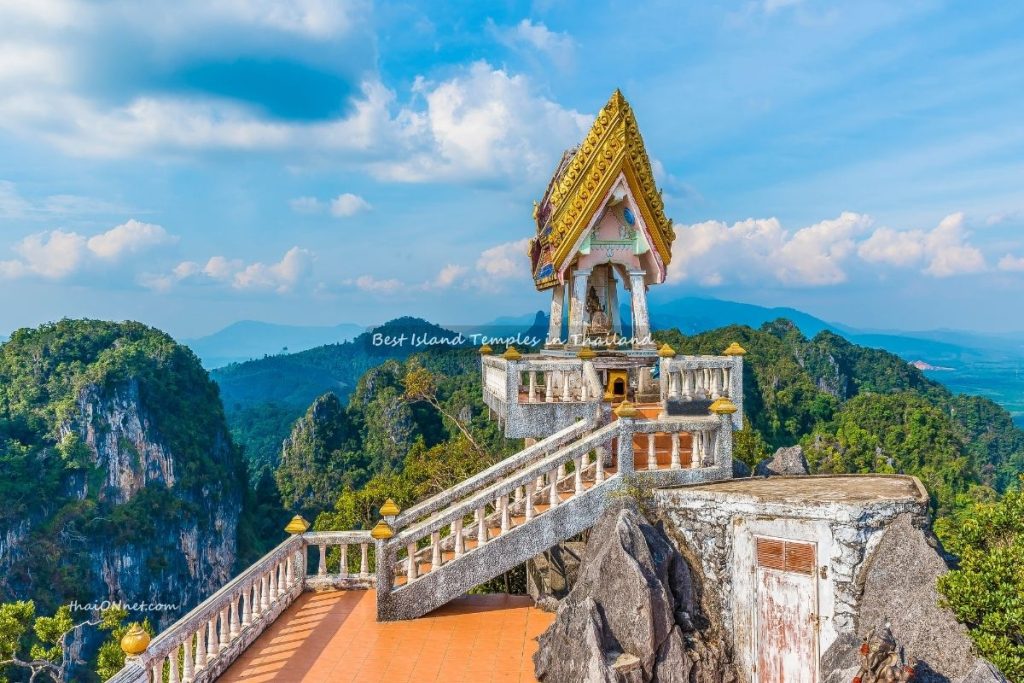
These moments are why many travelers say island temple visits linger long after beach days end—they’re invitations to pause, pay attention, and carry a little more gentleness home.
Phuket in Detail: Routes, Timings, and Tips
Morning plan: Head to Big Buddha right after sunrise for the coolest air and clear views, then continue to Wat Chalong as the halls open. Add a café break nearby, and you’ll still have a half day for beaches.
Afternoon plan: Reverse the order and finish at Big Buddha for sunset. Evenings glow across the bay, and the hilltop breeze is a relief after a warm day.
Getting around:
- Scooter: Most flexible, but ride within your limits; roads can be steep.
- Taxi/ride-hail: Convenient for multi-stop routes; agree on price or meter.
- Tours: Good if you want a guide for context and a stress-free loop.
Good to know:
- Alms rounds happen early; don’t block pathways.
- Cover up before entering any hall, even if other visitors are casual.
- Markets near festivals are lively but crowded—watch your step and keep the temple’s quiet spaces peaceful.
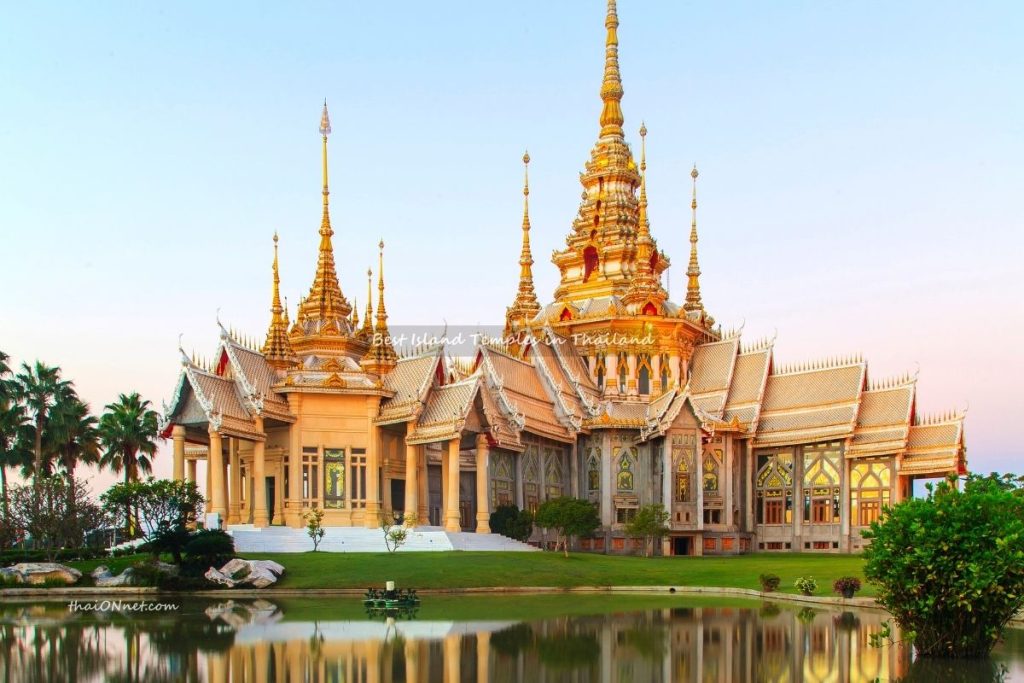
As you link Phuket’s landmarks, you’ll quickly see why travelers group them among the best island temples in Thailand—accessibility, views, and living tradition all in one.
Koh Samui in Detail: A Short, Beautiful Loop
Wat Phra Yai → Wat Plai Laem → Coastal Viewpoint makes a scenic morning or late-afternoon loop. The causeway to Wat Phra Yai frames the statue against shifting tides; a few minutes away, Wat Plai Laem’s bridges and lakeside shrines create mirror-like reflections. Wrap with a viewpoint stop for a sea breeze and a snack stand coconut. Families love this route for easy parking and short distances, while photographers appreciate the contrasting styles and water reflections. It’s easy to understand why so many itineraries join Koh Samui and Koh Phangan temples as one themed journey—vibrant art, gentle rituals, and sunset-ready angles.
Koh Phangan in Detail: Quiet Paths, Clear Minds
Phangan rewards unhurried days. Begin at Wat Phu Khao Noi for a contemplative stroll, then move to a ridge-top wat for sweeping light. Ask at the office about meditation times—visitors are often welcome to sit in the back. If you come during a festival, follow residents during candle-lit circumambulations and keep phones pocketed; participating with full attention is the best memory you can carry. Food stalls appear around big days—try a grilled banana or a cup of chrysanthemum tea, then return to the calm of the grounds.
Those designing a two-island route—pairing Koh Samui and Koh Phangan temples—often mix one lively, photo-rich day (Samui) with one quiet, reflective day (Phangan). It’s a balanced way to experience art and silence side by side.
Koh Chang in Detail: Slow Travel, Strong Connections
Base yourself on the east or south to be close to Wat Salak Phet and low-key coastal life. Mornings bring clear views and birdsong across mangroves; afternoons can be breezy and dramatic before evening showers. Ask about local community projects; donations here stretch far in maintaining roofs, repainting halls, or supporting school programs. Small gestures of care are part of what make island travel feel generous—by giving a little, you become part of the story the temple tells.
Your 3-Day Path to the Best Island Temples in Thailand
Day 1 – Phuket: Sunrise at Big Buddha, late morning at Wat Chalong, lunch nearby, sunset beach walk.
Day 2 – Koh Samui: Wat Phra Yai after breakfast, Wat Plai Laem by mid-morning, nap or swim, blue-hour photos on the bridges.
Day 3 – Koh Phangan: Easy morning at Wat Phu Khao Noi, hillside lookout in late afternoon, blessing at dusk if available.
Prefer a slower roll? Spend two days each on Samui and Phangan. The boats are frequent, and choosing calm over speed often yields the richest encounters. If you’re collecting personal highlights among the best island temples in Thailand, let conversations guide you—ask a vendor about the story behind a statue, or a monk about the meaning of a chant.
Practicalities: Transport, Time, and Weather
Getting there: Domestic flights reach Phuket, Koh Samui, and Trat (for Koh Chang). Ferries connect Samui and Phangan comfortably, with taxis and songthaews at piers.
Best times: Mornings and late afternoons. The islands share warm, humid weather; micro-climates vary, so check local forecasts.
What to bring: Modest clothing layers, slip-on shoes, water, sunscreen, insect repellent for forested wats, and a scarf for shoulders.
Language tips: A simple “sawasdee kha/khrap” and “khob khun” (thank you) go a long way. Smiles help everywhere.
If you’re tracing your route through the best island temples in Thailand, build buffer time between stops. Temples are places to linger, not to “do and leave.” Give yourself room to sit, watch, and breathe.
Responsible Visits: Giving Back and Staying Kind
Temples sustain community life—scholarships, repairs, food for those in need—so your donations matter. If you want to help, ask where funds are most needed; you may be pointed to a roof project or a school campaign. Buy offerings respectfully and place them gently on trays rather than directly on statues. Keep grounds tidy—carry out bottles and snack wrappers. When in doubt about any practice, watch locals and follow their lead.
Common Questions (Quick Answers)
Do I need to cover my shoulders and knees everywhere?
Yes inside main halls. Outside courtyards are more flexible, but bring a layer for sudden opportunities to enter.
Can I photograph everything?
No. Respect “no photo” signs; avoid using flash; and don’t photograph people while they pray without explicit permission.
How much should I donate?
There’s no fixed amount. Give what feels comfortable; even small notes help temple upkeep and community programs.
Are blessings always available?
Not always, but ask politely. If a monk is free, you may receive a brief water blessing and a small sai sin string.
Is it okay to visit during festivals?
Yes—arrive early, follow the flow, and keep phones down during processions. It’s a beautiful way to experience living culture.
Conclusion: A Gentle Way to Travel
Temple days imprint differently. You remember the rustle of robes, the soft drum of sandals at a doorway, a grandmother’s careful offering of marigolds. The islands add sea light and salt air, folding the sacred into everyday life. Let this guide be your start: plan lightly, dress respectfully, and move at human speed. If your path leads you across Phuket’s hills, Samui’s lake-islets, Phangan’s forest sanctuaries, and Koh Chang’s village halls, you’ll carry home more than photos—you’ll carry a steadier breath and an easier smile. May your journey among the best island temples in Thailand be unhurried, heartfelt, and blessed.
🙋 FAQs
1. What are the best island temples in Thailand for first-time visitors?
For first-timers, Big Buddha Phuket, Wat Chalong, and Wat Phra Yai on Koh Samui are top picks. They combine iconic views, cultural depth, and easy access.
2. Are the best island temples in Thailand family-friendly?
Yes. Many temples, like Wat Plai Laem in Koh Samui and Wat Salak Phet in Koh Chang, are peaceful and safe for families, with open courtyards and engaging cultural details.
3. What is the dress code for visiting the best island temples in Thailand?
Follow the Thailand temple dress code: cover shoulders and knees, remove shoes before entering halls, and avoid revealing clothing. Carry a light scarf or sarong for flexibility.
4. Can I join a blessing or meditation at island temples in Thailand?
Yes, several temples—such as Wat Phu Khao Noi in Koh Phangan—offer meditation sittings or water blessings. Always ask politely, respect local customs, and give a small donation.
5. Which islands have the most spiritual sites in Thailand?
The most popular are Phuket, Koh Samui, and Koh Phangan, known for their iconic wats. For quieter visits, Koh Chang temples like Wat Salak Phet offer authentic local experiences.




